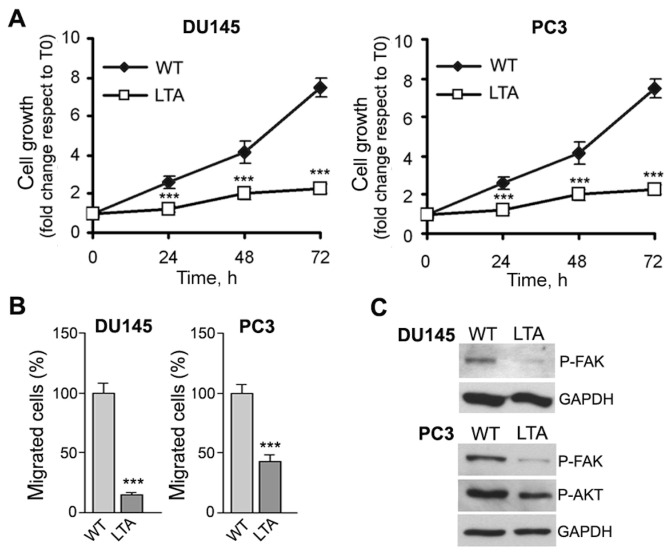Figure 4.
Biological and molecular properties of XN-adapted DU145 and PC3 cells. Cells adapted to long-term exposure to 10 μmol/L XN (DU145-LTA, PC3-LTA) and maintained in the presence of the drug show reduced proliferation rate (A; ***P < 0.001) and reduced migration (B; ***P < 0.001) when compared with parental cells (WT) grown in the absence of XN. These events correlate with a lower basal phosphorylation status of both FAK and AKT in LTA cells compared with WT cells (C). T0, time zero.

